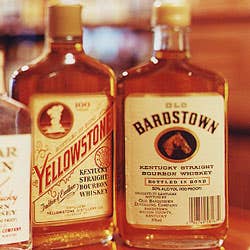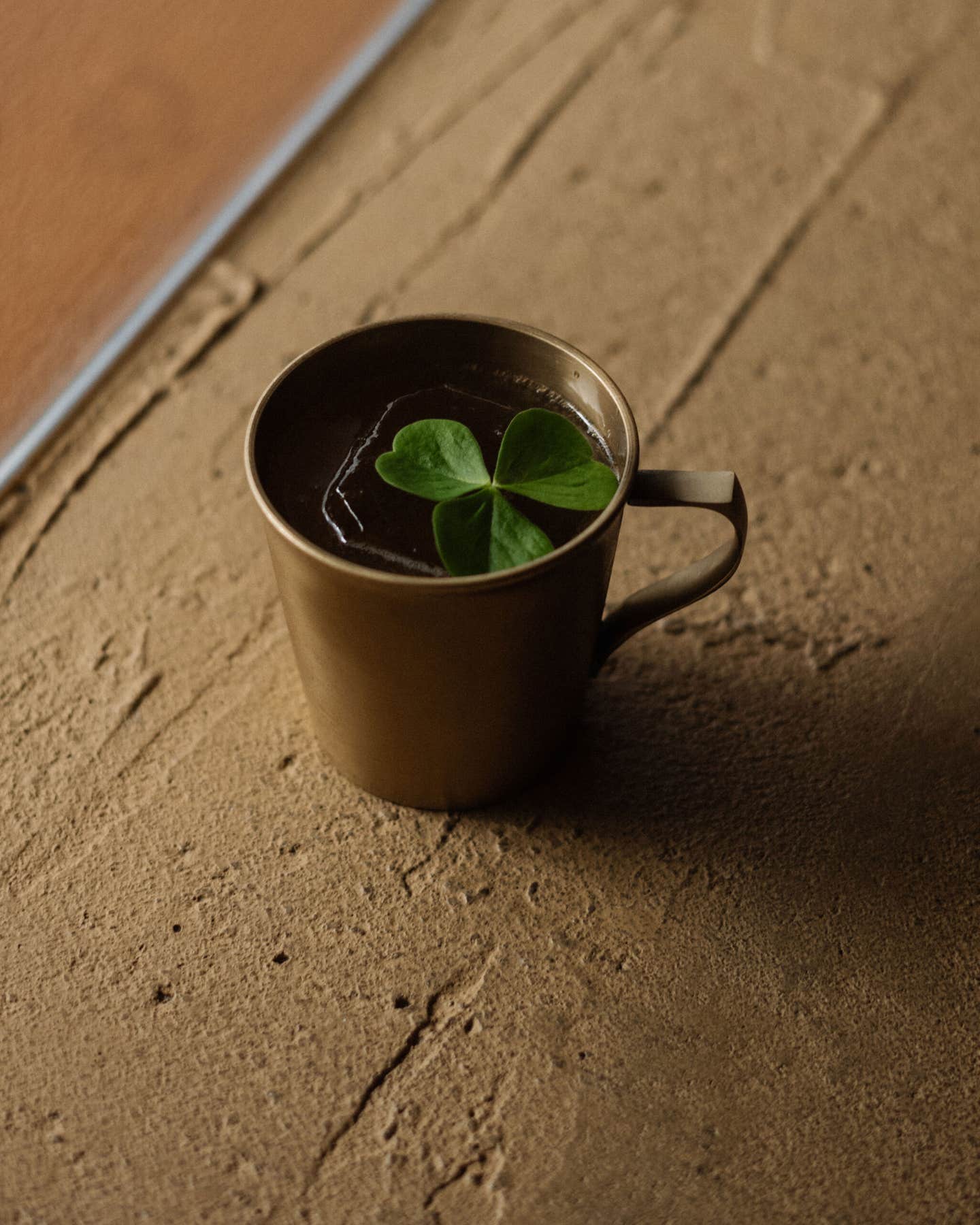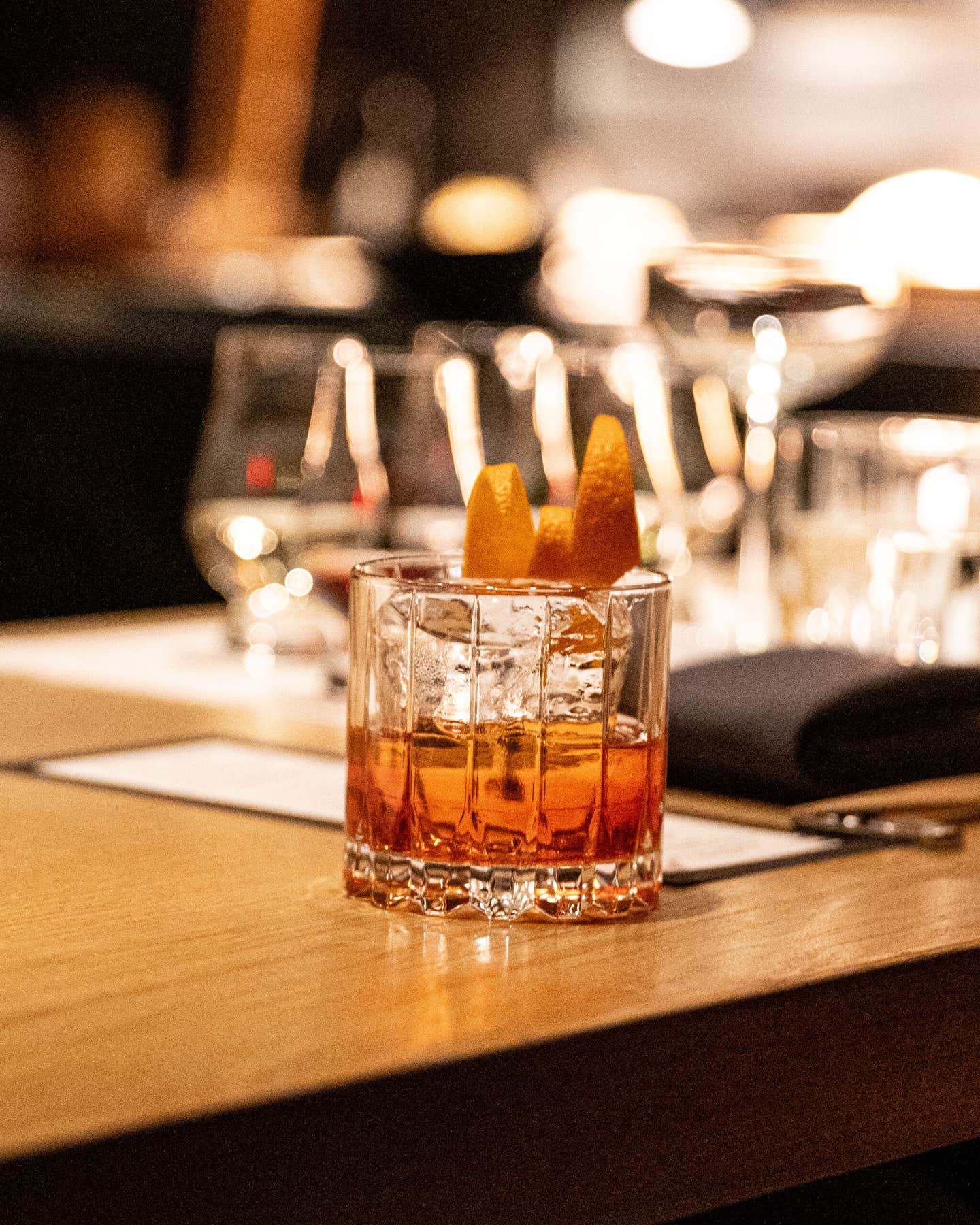
Bourbon Country
The bright red fire truck—a 1926 Bickle pumper—is parked on the lawn, and a lanky man in a white barman's coat is mixing drinks alongside it. He hands mint juleps, whiskey sours, and manhattans to a thirsty crowd of Yankee journalists who have come down to Kentucky, curious about the place where bourbon was born.
Bill Samuels Jr., president of Maker's Mark (whose bourbon launched the current tide of premium American whiskeys), waves to the journalists from across the yard, with a "Y'all come on now" that signals the start of his distillery tour. Samuels, the unofficial spokesperson for the industry, knows that bourbon—long associated with rowdy rednecks and hard-drinking rebels—is in need of a little public relations if it's going to appeal to the rest of the world. But in truth, while bourbon has its roots in moonshine and stock-car racing, it also shares a history with Louisville's thoroughbred society. It is as comfortable in a heavy crystal tumbler at Churchill Downs as it is in a flask stuffed in some ex-con's back pocket. Refinement and recklessness all in one bottle, bourbon deceives with the sweetest aroma, then packs one hell of a punch. It is a favorite drink of Julia Child and Marcella Hazan, but of Hank Williams Jr., too. Bourbon is unquestionably democratic—the only true American spirit.
By law, bourbon must be a product of the United States, made from at least 51 percent corn (mixed with malted barley and rye or wheat) and aged a minimum of two years (though most are aged at least four) in charred new oak barrels. No flavorings, colorings, or neutral grain spirits may be added. And most of it (fully 98 percent)—the best of it—comes from Kentucky, the only state that may be named on the label. (Jack Daniels, though often thought of as a bourbon, is actually a Tennessee whiskey, made slightly differently: The whiskey is filtered through sugar maple charcoal before it is aged.)
The capital of the bourbon industry is Bardstown, home to the Oscar Getz Museum of Whiskey History, the Talbott Tavern (the oldest operating stagecoach stop in America), and Distiller's Row (a street filled with Georgian mansions that once belonged to America's biggest bourbon producers). Within the city limits are two of the 10 distilleries producing Kentucky bourbon today: Heaven Hill and Barton. Venture just a few miles outside of Bardstown, and you'll find two more: Maker's Mark and Jim Beam. The other six—United Distillers, Early Times, Ancient Age, Wild Turkey, Four Roses, and Labrot & Graham—are located within a 50-mile radius.
Like Bardstown itself, the people who live there are steeped in bourbon. The big picture may have changed—most distilleries are owned by large corporations—but the same old families are still in charge of the whiskey. Bill Samuels of Maker's Mark grew up on Distiller's Row. "My godfather," he elaborates, "was Jim Beam." Samuels took over operations at Maker's Mark from his father in 1975, but he can trace his bourbon roots back six generations—to Robert Samuels, who left Pennsylvania in 1780 and set up stills in Kentucky. Around the same time, Jacob Beam, Jim's grandfather, moved south, too. Samuels and Beam are but two of the hundreds of farmer-distillers who moved to Kentucky in the late 18th century. Many were enticed by land, given away in lotteries to encourage settlement of the frontier. Others were on the run.
In 1791, in an attempt to relieve debts incurred during the Revolutionary War, George Washington levied the first American tax on spirits—and Pennsylvania's Scottish-Irish and German farmers, who had made whiskey from rye for decades, refused to pay. Riots ensued, leading to the first-ever dispatch of federal troops to curb a domestic disturbance. This so-called Whiskey Rebellion also sent many of the tax protesters packing, headed south on the Ohio River. When they landed in Kentucky County, they found pristine, iron-free water flowing over limestone creek beds, and plenty of corn—which they quickly realized made good whiskey. By 1820, Kentucky was exporting 2,000 barrels a year of corn spirits, mostly loaded onto flatboats where the Ohio and Kentucky Rivers meet, in what was then Bourbon County. Eventually, customers started asking for the whiskey by name.
But bourbon wasn't bourbon—yet. The first charred oak barrel was probably an 1820s accident, according to historians Gary and Mardee Haidin Regan in The Book of Bourbon (Chapters, 1995)—burned either by a distiller recycling a barrel or by a cooper toasting staves who turned his back for a minute too long. Today, charred barrels impart the caramelized sugars that sweeten, darken, mellow, and, for that matter, all but define bourbon.
Another development crucial to bourbon's identity was the sour mash process, invented by Dr. James Crow. A Scottish chemist and master distiller, Crow discovered that, by adding a portion of fermented leftovers to the next batch of mash and yeast (essentially the same principle used to make sourdough bread), he could more consistently control the characteristics of whiskey. Because Crow also aged his whiskey in charred oak barrels, the Regans credit him with inventing bourbon as we know it, probably by 1845. His brands, Old Crow and Old Pepper, were known up and down the Mississippi and favored by the likes of Henry Clay and Ulysses S. Grant.
Bourbon continued to thrive until Prohibition, when all but six U.S. whiskey distilleries (which were licensed for medicinal purposes) were shut down. After repeal, President Roosevelt knocked the distilleries down again—this time harnessing their energy, and alcohol, exclusively for wartime industry. Then blended whiskeys and rum (inexpensive and available) moved in. Not until the hangover 1980s, when people began to drink less and spend more, did things begin to look up for bourbon. "Not so long ago," Samuels admits, "bourbon had a terrible reputation." Then single-malt scotch gained popularity, paving the way for a whiskey renaissance. Suddenly, rich, brown bourbon began garnering attention north of the Mason-Dixon.
In 1994, Brown-Forman bought Labrot & Graham, an 1838 distillery in Versailles, Kentucky, and spent about $10 million restoring it. Lincoln Henderson, the company's master distiller, went to Scotland to study pot still distillation, and later helped design the three huge stills parked like spaceships in the oldest room at L&G. The distillery is a showcase for Woodford Reserve Distiller's Select, the only bourbon currently made in pot stills (a method abandoned in favor of more economical continuous stills after the Civil War). Woodford Reserve—like the other specialty bottlings—has helped to elevate bourbon's image.
United Distillers offers its own premium Heritage Collection bourbons, and Jim Beam is pushing its Small Batch and Masters' Collections. Admittedly, such marketing is a touch gimmicky—as is inviting crews of New York reporters down to peer over the fence. After all, who really wants to see a closely held tradition turn trendy? The distillers, however, recognize an advantage. As Henderson puts it, "The businessmen fight over market share; we're free to work together." The result of their efforts? The rest of the country, if not the world, may finally realize what the South has always known: that bourbon is a scoundrel's drink—and a gentleman's.
Keep Reading
Continue to Next Story










